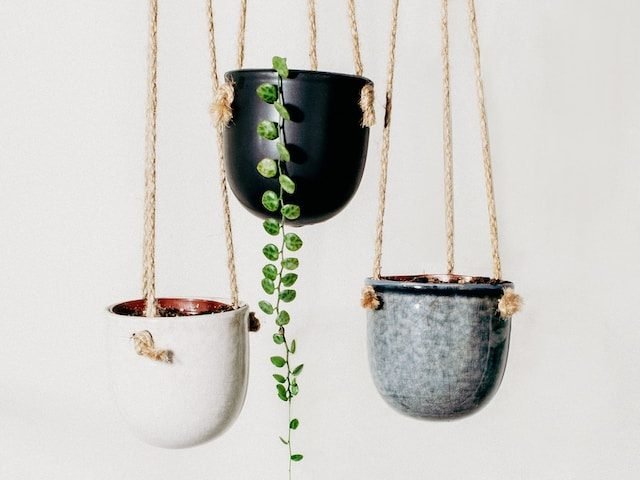
Loved for their cute little round leaves, the Baby’s Tears plant can be pretty sensitive if something isn’t quite right. A lot of plant parents really struggle with the leaves on their Baby’s Tears plant turning dry, brown and crispy. As they are such delicate plants, even the slightest issue can leave your plant looking wilted.
Luckily, we have learnt the hard way with these plants and have collected everything we know to help you understand why your Baby’s Tears has developed brown leaves as well as how to fix the issue and stop it from happening more in future.
Too much direct sunlight can burn the leaves
Baby’s Tears plants need bright but indirect light to really thrive. Whilst they can often adjust to a little bit less, growth will be slower and it can also cause brown leaves among other issues for your Baby’s Tears.
If your Baby’s Tears is sitting right next to a window, then the light might be burning the plant during the summer. It’s less of an issue during winter as the sun is weaker and the days are shorter.
If you think that direct sunshine is causing the brown leaves on your Baby’s Tears, move your plant a little bit further away from the window so that it doesn’t receive any direct sun. Unfortunately, once your Baby’s Tears leaves have been damaged from the sun, there’s no going back so we recommend trimming off the worst affected stems to encourage new healthy (and green) growth.
Low humidity levels can also cause brown leaves
To help avoid more brown leaves, it can also be important to increase the humidity for your Baby’s Tears.
They have very delicate leaves so even a little bit of dry air can cause the leaves to crisp up and turn brown. Luckily there are several really easy and cheap ways that you can lift the humidity level and avoid more brown leaves. Below are our top tips:
Misting the leaves
One of the simplest ways to increase the humidity for your Baby’s Tears is to mist the leaves with a spray bottle a couple of times a week. During the hottest period of the year, you can get away with daily misting.
Give your Baby’s Tears plant a shower
To quickly raise the humidity you can always give them a quick wash down. This is a short term solution but is great to give your plant that initial boost. Simply pop them in the shower or sink and wash them down with lukewarm water. Keep the water pressure very very low as you don’t want to damage the delicate leaves and stems on your Baby’s Tears plant.
Buy a humidifier
They’re relatively affordable little devices and they make keeping a consistent humidity level so much easier. Most will allow you to place them on a timer so they run on a fixed schedule, and some will even have a built-in monitor so they automatically turn on and off to keep the humidity exactly where you want it. We recommend this humidifier available on Amazon.
Temperature extremes can also cause brown leaves to develop
Hotspots or super cold drafts can also cause your Baby’s Tears to develop brown leaves. Hotspots can develop near windows where a lot of direct light is hitting them. They can also occur next to radiators and heating vents so make sure that your plant isn’t closer than 1m to any of these.
Cold drafts are also your Baby’s Tears’s worst enemy. A consistent stream of cold air coming in from outside through cracks in doors and windows can be quite harmful to your plant. This is especially dangerous during winter when temperatures can really drop. Make sure you draft proof any doors or windows that your Baby’s Tears and other houseplants are close to.
Underwatering causes dry brown leaves
Consistent underwatering will start to have an impact on your Baby’s Tears plant’s health and it can often cause brown leaves. As they are very sensitive plants, even a little bit of underwatering can result in brown leaves as they are less drought-tolerant than most other houseplant types.
Stick a finger in the top few centimetres of the soil to check the moisture. You can also try lifting your Baby’s Tears to see it if feels particularly light. If you find that your Baby’s Tears feels very dry, water it a little every other few days over the course of a few weeks.
Those are the most common reasons why your Baby’s Tears plant has developed brown leaves. It’s important to act as soon as you spot the first signs of trouble as the further the issue has progressed, the more difficult it can be to bring your plant back to full health. Once the leaves have turned brown there is, unfortunately, no way back so the best thing to do is remove the brown leaves. This will help your plant focus on growing new healthy leaves, rather than wasting energy on dying and dead leaves.
To find out more about caring for your plant, check out our Baby’s Tears care guide.















